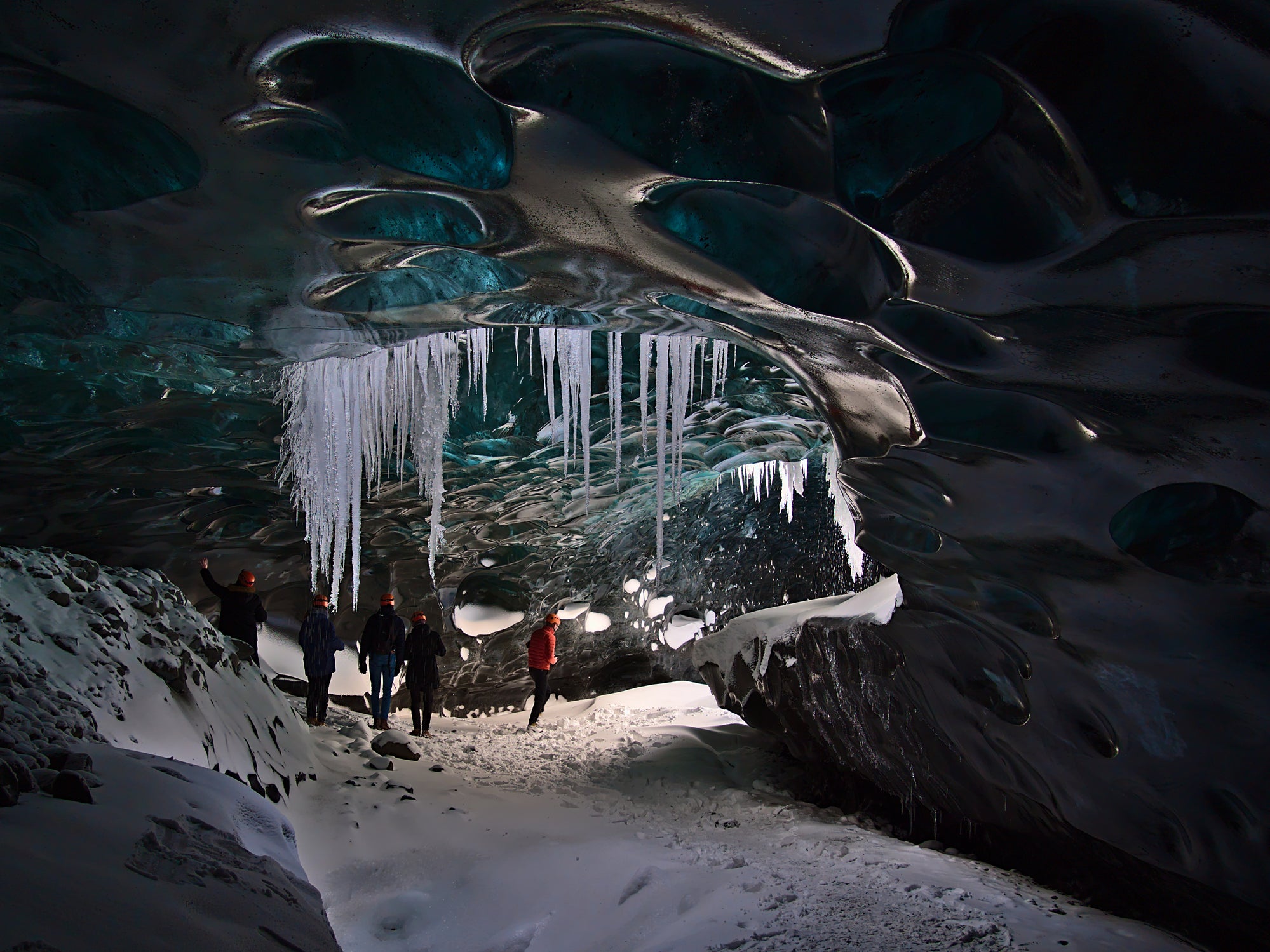Ice cave tours suspended in Iceland national park following death of tourist
Guides have warned against the dangers of glacier trips during the warmer summer months

Your support helps us to tell the story
From reproductive rights to climate change to Big Tech, The Independent is on the ground when the story is developing. Whether it's investigating the financials of Elon Musk's pro-Trump PAC or producing our latest documentary, 'The A Word', which shines a light on the American women fighting for reproductive rights, we know how important it is to parse out the facts from the messaging.
At such a critical moment in US history, we need reporters on the ground. Your donation allows us to keep sending journalists to speak to both sides of the story.
The Independent is trusted by Americans across the entire political spectrum. And unlike many other quality news outlets, we choose not to lock Americans out of our reporting and analysis with paywalls. We believe quality journalism should be available to everyone, paid for by those who can afford it.
Your support makes all the difference.Glacier tours have been suspended in an Icelandic national park following the death of a tourist when an ice cave collapsed last Sunday.
The tragic incident occurred during an organised ice cave tour of the Breiðamerkurjökull glacier in the Vatnajökull National Park.
Four people were struck by falling ice, with one male tourist pronounced dead at the scene – two suspected missing casualties were later revealed to have been miscounted from the tour group of 23.
Vatnajökull National Park has temporarily suspended tourism providers from taking ice cave tours in the area at this time.
Glacier guides in Iceland are now calling for more stringent safety procedures to be introduced on the “risky” tours.
The Association of Icelandic Mountain Guides has already called for a full investigation and tighter regulations on ice cave tours. Glacier trips during the warmer summer months can be very dangerous, the association said.
Stephan Mantler, an AIMG-certified glacier and mountain guide, told The Independent: “Overhead risks exist in any activity on a glacier. The moment you are going into a glacial structure there is ice above you and you should ask how safe is this?”
The local expert added that there was an obvious “error in judgement” on whether it was safe to walk underneath the glacial structures last weekend.
Mantler wrote on Facebook: “... just to be clear: I have never, and will not, offered ice cave tours in the summer, exactly because I know how volatile those places are in these months.”
He pointed out that several tour guides only run glacier walks from the beginning of November to the end of April to ensure that the structures are not melting in “unpredictable” ways.
The Icelandic Meteorological Office recorded temperatures at Kvískerj up to 15 degrees on August 25.
The local expert said: “One of the critical aspects of late summer is how rapidly glaciers change, especially in August and September when they have been baked by sunlight and warm temperatures, and infrequent reviews are entirely inadequate.
“It would have been the company’s responsibility to ensure safety checks are performed sufficiently often, which in this time of the year may indeed be every single day.”
He added that the “writing was on the wall” for tour companies that felt the pressure to push the safety boundaries too far.
However, the guide says that a “blanket ban” on summer ice cave tours is not necessarily the answer.
Instead, guides and tour companies should not be afraid to disappoint customers and refund trips when glacier conditions are assessed as unsafe.
Mantler also called on the National Park to “sufficiently monitor the commercial activities” operating.
He said: “We need to have some sort of structure that develops by people who are out there and present in the field and seeing the companies that are bending the rules by going to places that everyone else agrees are not safe to visit or flaunting group size limitations.
“There is always going to be some level of risk involved being out in nature it’s very dangerous, but we can make it better than what has happened so far.”
For more travel news and advice, listen to Simon Calder’s podcast
Join our commenting forum
Join thought-provoking conversations, follow other Independent readers and see their replies
Comments